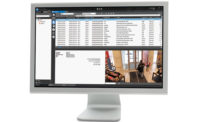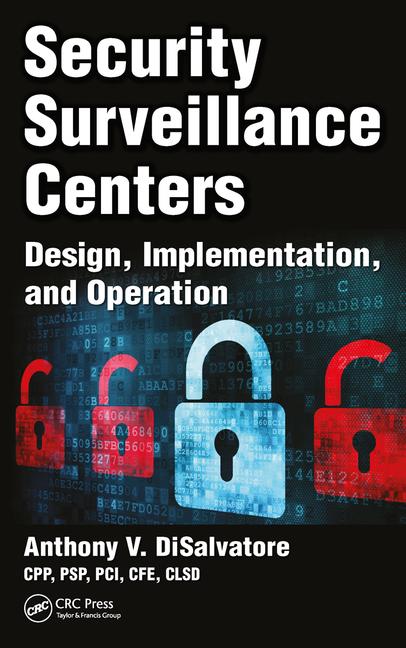Business-Enabled Security: From Data to Insights
Industry experts talk the tech and trends that are enabling security solutions to deliver business insights.

Dashboards can display data in an attractive format, making it much easier to form hypotheses. CECILIE_ARCURS/E+ VIA GETTY IMAGES
Recently, there’s been discussion of interconnectivity in the security industry. The aim of many is to make once siloed systems aware of one another — the thought being that perhaps the access control, video surveillance and fire alarm systems aren’t unrelated, and perhaps they should work together. These systems have often collected data, but as they become more interconnected and as we transition to the cloud, those systems have been able to translate that data — through software — into insights for businesses about their building, its traffic and its usage.
“Security-enabled business application solutions leverage various data sources — such as user databases or biometric data — to enhance operational efficiency and security across different domains, including access control, identity management, video surveillance, cybersecurity, facility management and compliance,” says Bruce Montgomery, commercial security vertical market manager, building automation, Honeywell, Charlotte, N.C. “However, it’s important to note that the term ‘collecting data’ might not entirely capture the essence of these solutions. Instead, it is more accurate to describe them as solutions that actively use data from diverse resources.”
Most solutions are tracking data, says Charles Pitman, product marketing manager, Genetec, Montreal. “They’re tracking the different interactions and events that are taking place within a facility. When it comes to the type of solution that has the ability to apply that data in a way that benefits the end users themselves, you’re looking for solutions that have a lot of strong integrations and are already thinking about how to make use of the third-party data.”

Pitman continues, “From there, can these solutions make it easier to go from data to insights?”
The Tech That Enables the Insights
Business-enabled security solutions are solutions that provide security for the user while also delivering data analytics that can improve operational insights. While security solutions have been aggregating data for some time, the push now is toward delivering data insights — being able to translate raw data into actionable information. Those insights are what turn a security solution into a business-enabled security solution. While dashboards can provide a low-tech method of visually displaying data, more insightful analysis is done primarily through artificial intelligence (AI) and machine learning.
“Artificial intelligence and machine learning are essential topics in data analytics,” says Matthew MacIntosh, product manager, hosted solutions, AMAG Technology, Hawthorne, Calif. “Machine learning is currently in high demand and can be divided into two concepts: structured and unstructured learning. Structured learning involves the system searching for defined patterns, whereas unstructured learning involves the system itself identifying patterns in the data.”
Every device in the system gathers data, which increases the importance of interconnectivity. “Analytics involves analyzing data from the access control system, which includes transactional data from various connected devices such as readers, locks, panels and cameras,” MacIntosh continues. “The data also includes information about cardholders and visitors.
The more interconnected, the more insightful the data analysis will be. “We’re seeing a push towards IoT devices and connected devices, especially in security,” Pitman says. “It’s a part of the industry that for a long time was neglected by the security department. They didn’t see much value, but as access control and video devices have themselves become more connected, we’re starting to see people ask themselves, ‘Why wouldn’t I have this other data point that I could pick up and associate to the rest of my system?’”
Pitman continues, “A lot of people are taking this opportunity to connect any number of other devices. [For example] fire panel sensors — which would typically have been a separate system completely — are now connected to a larger security system. Why wouldn’t I want my security department to know if there was a fire as well?”
Most new technologies and markets will translate to new opportunities for security dealers and integrators, but what opportunities come with business-enabled security?
John Szczygiel of Brivo says, “The typical integrator is going to be speaking with the security person, but when you’re bringing this business value suddenly you may be talking to the head of HR or the CFO or a business executive who now — perhaps for the first time — is going to know who their security integrator is. I think that’s a huge opportunity for an integrator to widen their audience within their customer base.”
There is also the opportunity to look outside of the industry for inspiration. Charles Pitman, Genetec, says, “Make sure that you’re taking some training, that you’re learning about how data can be used and how other facility systems are connecting into the security systems. Maybe that’s looking at what building management systems (BMS) are out there. Maybe it’s looking a little bit outside of the traditional security markets and seeing how people are using them.”
Pitman also says there is the opportunity to add statistic minded individuals to dealers’ and integrators’ teams. “We’ve really undergone a boom in terms of the amount of information that’s being collected by these systems,” he says. “Customers might be starting to move towards dashboards, or they might have some kind of aggregator that they use to manage different systems, but they’re still just very basic aggregation statistics. What is the average number of people coming through? What are the peak times? Things like that.”
Pitman says that, sometimes, to get insights, “You need a data person, who most security facilities don’t have. It’s not typical for them to have someone who is very data minded on staff.”
Another opportunity in business-enabled security solutions lies in better informed users. “Users are thirsty for knowledge,” Pittman says. “They want to know more about what’s going on so that they can figure out the things they don’t even know are problems. People do live in ignorance of problems for very long times when it’s not put in front of them.
“Once someone starts looking at the data, there’s suddenly a lot of questions that are asked and that opens up new possibilities to solve those problems. Once you start seeing data — especially if the data is clean and in an attractable format — you start forming hypotheses. And then from there, you start asking yourself, ‘Well, is there something I could do to the system as it exists today to show that that hypothesis is true?’”
And that could translate to opportunities for dealers and integrators to satisfy needs for the user. “Maybe they need a lock on a door that was never locked before, or maybe they need a reader on a door that was never guarded before,” Pittman says. “Or maybe they need another sensor or a camera.”
Those are small but cumulative adjustments that data insights from business-enabled security solutions empower users to make.
The Security Side
One component of the analysis is the data that directly translates to actionable security decisions. Sometimes, that can be the same data that delivers business insight, like traffic; but it can instead be interpreted to help inform safety decisions. For example, John Szczygiel, executive vice president and chief operating officer, Brivo, Bethesda, Md., says, “I know there are customers who use that to plan out where they deployed their guard force.”
But the data can also be used to detect events that may indicate security risk. “This data is processed to identify any anomalies that may indicate suspicious behavior,” MacIntosh says. “For instance, anomalies can be a cardholder using a reader that they don’t normally use or at a time they don’t usually use it. Analyzing this data can also help identify devices that are generating more alarms than they typically do.
“Suspicious behavior can include things like using a card in different locations within a short period or entering the wrong PIN multiple times,” MacIntosh says. “Additionally, analytics helps identify how buildings are being used, such as what departments have the most traffic, and which areas are the most and least used.”
The Business Insights Side
Another very important component of the business-enabled security solution is the actual business insights. Pitman says, “Some features are addressing challenges like occupancy and wayfinding. People are very, very interested in these features. I think the interest started a little bit during the pandemic, which created a need to understand ‘Who’s in my building? When are they in my building? How do they get to different places? Are there more efficient ways of guiding people?’”
Pitman continues, “But with the return to work, that’s definitely transferred to, ‘Are people coming into work? Am I utilizing my facility properly? Do I need the real estate that I have? Or could I be doing something better with it?’ Those are very, very common questions that are tightly related to that data collection.”
There are many business-enabled solutions in the security industry, here are a few from the industry experts we interviewed.

Genetec Security Center
Genetec Security Center is built from the ground up to unify all of the users data so that they can manage security policies, monitor events and run investigations. Its extensive ecosystem lets users expand their system with the technology you need to face emerging threats. And since it’s not focused on one narrow set of tasks, it accommodates new data types seamlessly in one interface.

Brivo Access Enterprise & Data Explorer
Brivo Access Enterprise Edition with Data Explorer is a data analytics solution built for enterprise businesses. Data Explorer offers users a visual representation of access data within the Brivo Access platform. Users can monitor building activities, usage trends and potential security risks across their enterprise in a single view. With Data Explorer, there is no need to export data — users can use the built-in data analytics to improve security, reduce risk and optimize facility operations.

Honeywell Business Intelligence
Honeywell’s business intelligence software manages the complete lifecycle, operational visibility and performance analysis of assets, people and tasks, helping to increase business productivity and profitability. Designed to help users get the most out of their workforce and assets, Honeywell software solutions can help users transform their business. Tackle ongoing challenges such as battery lifespan, missing devices, device security, and attracting and retaining a productive, engaged workforce with Honeywell business intelligence software.
And once that data is collected and analyzed, organizations can start making informed decisions about their facility, its structure and its operations. “One common solution application is the integration of systems through database connections, such as in a college campus where student or staff identification (ID) cards are utilized,” Montgomery says. “Through database integrations with systems in departments like human resources, parking, vending or other Point of Sale (POS) systems extending beyond physical access, businesses can dynamically manage access permissions. For instance, in a campus setting, the ID card not only identifies students but also allows for automatic assignment of access permissions based on class schedules and dorm assignments.
“Similarly, in a commercial office, the integration of these data sources enables efficient workforce management, Montgomery continues. “Knowing who is working on specific days and where they require access can be seamlessly synchronized with various services such as vending machines, food services and printing facilities. Overall, security-enabled business application solutions facilitate seamless integration, real-time decision-making and enhanced security measures for businesses and institutions.”
The Value Add
As dealers and integrators expand into this space, there’s the value add to consider. Primarily, the experts say that comes in two ways: choosing an open and communicative system and in developing a partnership with the users. “Access control systems have been generating a large amount of data for a long time,” MacIntosh says. “However, the challenge has always been to sift through all the data to identify what is important and what is not.”
Pitman echoes this idea. “At some point, deploying more stuff just means noise if you’re not doing it in a concerted manner,” he says. “I think the integrators have an opportunity to elevate the offering that they have to become real partners with their customers and take a little bit more of an involved role, guiding them in how they could be utilizing the stuff that their system already does, and that becomes a feedback loop: I show you what you can do with what you have, suddenly, there’s a reason to have more of what I have.”

As for creating that relationship, Montgomery says, “The integration of security-enabled business applications takes out many ‘roadblocks’ by creating an integrated application. By doing so, the relationship between the manufacturer [or integrator] and the customer becomes a consultative partnership rather than a transactional relationship. This is in part due to the manufacturer [or integrator] team playing a crucial role in advising and supporting customers through sometimes complex integrations.”
Montgomery continues, “As a result of the benefits and consultative relationship, customers are more inclined to stick with the system. The depth of the relationship, coupled with the ongoing support and advice provided by the manufacturer’s application engineering team, creates a sense of reliability and trust. This ‘stickiness’ is a testament to the value of integrated security solutions in establishing enduring partnerships between customers and manufacturers [or integrators].”
Szczygiel agrees, “I think in the security industry, some integrators have moved to providing more professional services. Whether that’s policy advice for customers, implementing the systems, operational support for the systems, or even this kind of data mining category, some really savvy people are doing that and growing their business based on that sort of knowledge work as opposed to just the physical work that we’re typically associated with. It’s an opportunity to get much closer to your customer to really provide operational expertise and also to be paid for it.”
Looking for a reprint of this article?
From high-res PDFs to custom plaques, order your copy today!









